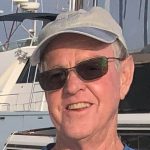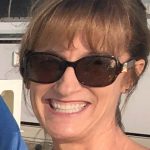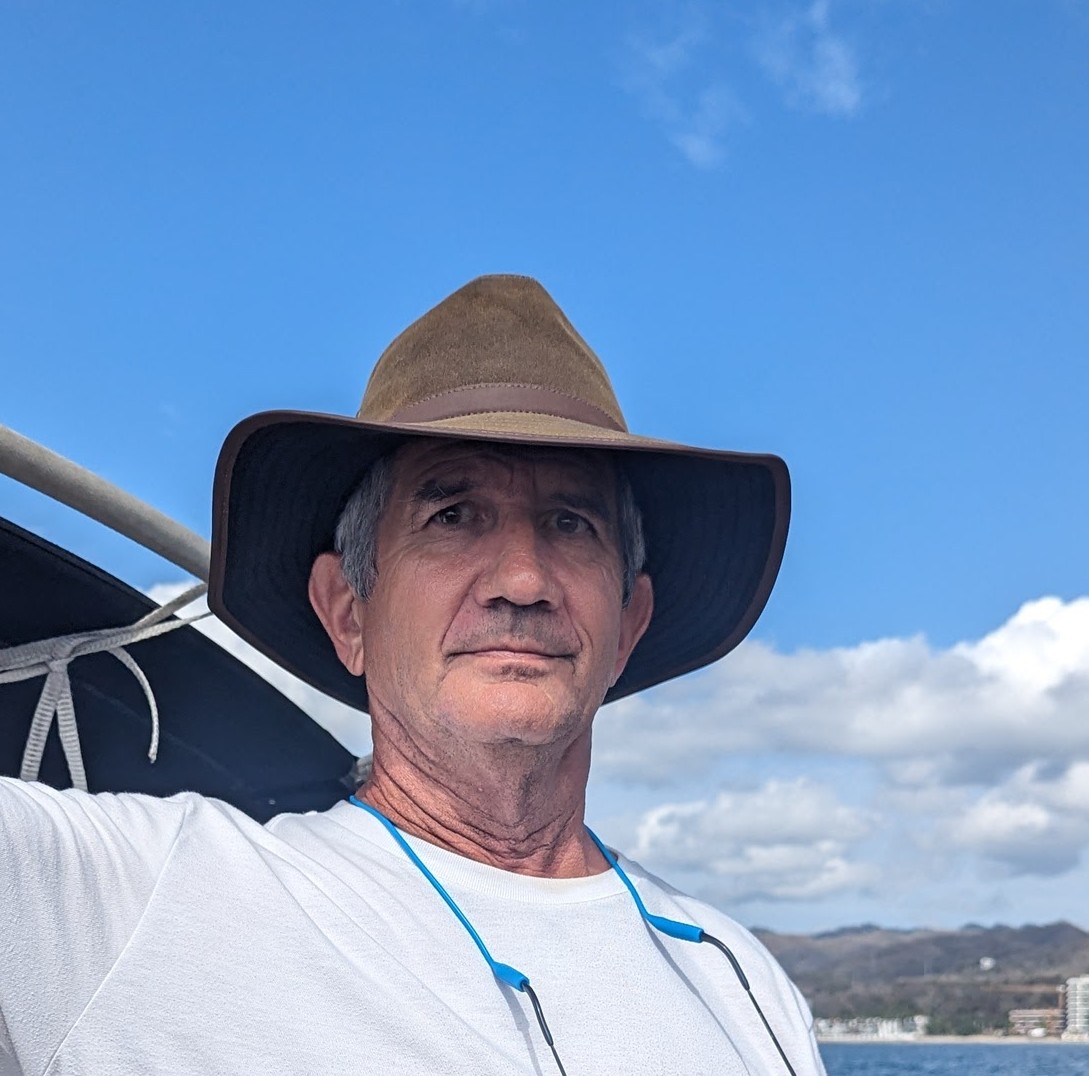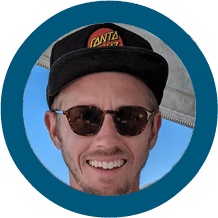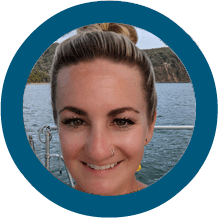PASSAGE REPORT: SV WANDERLUST FIJI TO NEW ZEALAND
PASSAGE REPORT: SV WANDERLUST
FIJI TO NEW ZEALAND
SV WANDERLUST crossed the Pacific Ocean and spent last season in French Polynesia. This season they cruised west through many islands with plans to spend cyclone season 2024/2025 in New Zealand. For the final leg of this part of their voyage, they sailed from Fiji to New Zealand. Here they share their Passage Report and Log:
The Fiji to New Zealand passage is notorious for its challenging weather scenarios. An approximately 1100 nm journey across open ocean with lows marching west to east every 5-7 days. Sailors typically depart on the tail of a low, enduring challenging conditions in the beginning in order to avoid getting smacked by a low with unknown conditions in the final stretch. Our situation has an added layer of complexity as we’re sailing with a dog that we’re exporting from Fiji to New Zealand. I’ll spare you the details but essentially we had to select our departure date 8 weeks ahead of time to start the testing and treatment required to import Yoda to New Zealand. We could not depart until the blood test results were issued from a lab in the United States which took 3 weeks and NZ Biosecurity regulations state the blood tests expire after 26 days which meant we had a 5 day departure window. Pair that with a nice bout of flu morphed into pneumonia for the captain and our departure options were slim. New Zealand Biosecurity confirmed Yoda’s blood tests would expire on 10/27 so we checked the weather and saw the winds were a bit patchy on a few days but we wouldn’t get clobbered, so decided to depart on Friday 10/25. Ship’s Log 10/25-10/26 Vuda Marina’s staff tied a beautiful floral wreath to Wanderlust for good luck and serenaded us with a beautiful song accompanied by guitar. Fijian lyrics told a tale of how wonderful it was to meet and spend time together, how they will miss us but wish us fair winds on our journey. Tears sprang to my eyes even though I’ve heard this sound countless times over the past week as nearly half the boats in the marina left for New Zealand and Australia. We met customs at 2:30pm in Vuda Marina and departed Fiji shortly after with the bow pointed towards Auckland! It’s not the ideal weather window but it’s good enough and Yoda’s (our French Bulldog) blood tests expire tomorrow so we’re off!

In true sailing fashion the first overnight was a fair amount of reefing and hoping the lightning stayed far
away but we were able to shake the reefs early this morning and are heading upwind at 8/9 knots. Our
wind instruments are acting up so we don’t have any true wind data but have apparent wind so as long as
that sticks around we’re good. 😊
10/26-10/27
Yesterday was one of the most beautiful sailing days we’ve had in a long time! Sunny skies, winds up to
20 knots on the beam or just forward so we could sail with the screecher most of the day. Our top speed
so far is 13 knots and our average for the first 263 miles is 7.5.


This morning the wind died so we had to engage the iron sails. 🤣 This was expected and we planned to use this time to finish cleaning our hull for NZ. Apparently you’re not supposed to clean your hull in Fijian waters and we were in a marina until we left so we had to do it at sea. I DO NOT recommend this. It was really tough even though the seas were calm and there was very little wind. First and last time for sure, but it’s done and the hulls & props are clean.




A bit before jumping in to clean the hull we caught a good size skipjack tuna! Needless to say we motored for about an hour from where we caught the fish before jumping in to clean the hull. Wind should fill in tomorrow morning. Until then we’ll be resting up!


10/27-10/28 Upwind Climb
We’ve been sailing upwind since midnight last night. Bashing into short choppy waves up to 22 knots
made for an uncomfortable night. Thankfully, the winds have eased up now and the ride is more
comfortable. Hopefully a better night’s sleep is in the forecast tonight.


10/29-10/30 Every Day is Different Out Here
We’re on Day 5 of our Fiji to NZ passage and every day has been different! Yesterday the wind died and
the ocean was like glass so we motored until early this morning when the wind picked up. Earlier today
we went through some squalls associated with the low passing to our south. Now we’ve got apparent
wind to 22 knots and we’re cruising along. ⛵🌊🙌

10/31-11/1 Happy Halloween
Happy Halloween from the high seas! It has been slow going with low wind and now no wind but we
suppose that’s better than getting hit by the low that went by to the south of us. We’re getting closer

11/1-11/2 Schizophrenic Day 8 & Land Ho
The day started out with no wind, then filled in a bit so we were able to hoist the sails. The breeze
continued to increase throughout the day, up to 27 knots but at least it was from behind. There’s a front
coming across New Zealand around midnight tonight with sustained winds of 25 knots gusting to 35. We’ll
probably get a bit of this but hope to make it to Auckland in the early morning hours.

11/1-11/2 Schizophrenic Day 8 & Land Ho
The day started out with no wind, then filled in a bit so we were able to hoist the sails. The breeze
continued to increase throughout the day, up to 27 knots but at least it was from behind. There’s a front
coming across New Zealand around midnight tonight with sustained winds of 25 knots gusting to 35. We’ll
probably get a bit of this but hope to make it to Auckland in the early morning hours.
11/2-11/3 We Made it to Auckland!
8 days 14 hours and 1227 nm later we are in Auckland! We arrived early this morning around 6am and
tied up to the customs dock. Customs, Biosecurity and the quarantine facility will be by this afternoon as
many of the streets are closed this morning for a marathon. We had winds to just over 30 knots on the
nose last night so it was like riding a bucking bronco for a few hours but other than that the trip was quite
comfortable. Though, we did motor more than we’d hoped. That’s what happens when you’re sailing with
a dog. You pick a window and usually stick with it. Overall we are thrilled with the outcome of this
notoriously challenging passage and are looking forward to our time in beautiful New Zealand!
SY WANDERLUST 🇺🇸 Kristin, Fabio, & dog Yoda - Seawind 1600




THANK YOU FOR SHARING YOUR ADVENTURES ON THE HIGH SEAS!
BUNDLED C'S POSSE PERK: COMMUNICATION, COMRADERIE, COMMUNITY
OCEAN POSSE PERK:
BUNDLED C'S
(COMMUNICATION, COMRADERY, COMMUNITY)
Some Ocean Posse Perks don't fit into one liners. Some are the product of the fleet and the way the Posse is purposely set up. Hence "The Bundled C's": this perk is really the result of the serendipitous, inner workings of many Posse Perks which include Communication, Comradery, and Community.
The Ocean Posse is a community of voyagers on their own schedules. Each member participates in one or all of several format options for communication undeniably developing comradery over the course of their conversations, meet ups, shared anchorages, sunsets, and information exchanges. This week was one of many examples between three vessels each in a different part of the ocean along their voyage connecting over where one might drop their hook after crossing into Panamanian Pacific waters from Costa Rican waters.
When a vessel checks out of Costa Rica in Golfito the authorities expect that, weather permitting, the vessel will then leave Costa Rican waters without stopping. Leaving Golfito, Costa Rica for Panama vessels go south to round Punta Burica and east into Panamanian waters. Punta Burica protects the waters and islands to the east from a lot of weather making for a pleasant cruise out of Costa Rica into Panama. Many vessels will tuck into one of the small, less travelled, and spectacular islands of Western Panama en route east to Panama City.

Today, there are a dizzying amount of chat groups out there for wherever you are.. The Ocean Posse uses the LineAp to have a focused, real time format for communicating among the fleet. General communication is usually short lest people take their conversations directly to one another. As rounding Punta Burica is a milestone along the Pacific Central American route, this week MV PAUSE reported :
Just rounding Punta Burica and are now in Panama from West Coast Cost Rica, headed to Isla Parida for the night. It has been pretty much non stop rain for 4 or 5 days now but fortunately no lightning.
This message came as an update on their progress. Fellow fleet member SV RAAJA replied from further east:
I spent several days anchored off of Isla Gomez. It is a tiny uninhabited island with a beautiful beach. Highly recommended if you are headed for Parida!
Another vessel SV JUBEL who spent time cruising this area last season replied from the north side of Panama:
Second this
MV PAUSE apparently swayed and please with the recommendations:
Just dropped the hook at Isla Gomez. Beautiful


THANKS FOR BUNDLING THE C'S TOGETHER & ENJOY THE ISLANDS!
MV PAUSE 🇺🇸 Beth & Larry - Nordhavn 55′, SV RAAJA 🇺🇸 Skip – J boat 46’, & SY JUBEL 🇨🇦 Leah & Kyle - Gulfstar 44'
